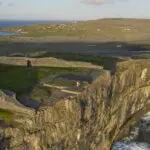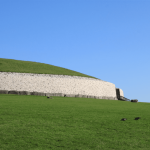The Kerry Way is a 135-mile, long-distance walking route that takes hikers through some of the best scenery in southwest Ireland. This multi-day trail will allow you to see the rugged, rural countryside of County Kerry, as you spend several days passing through valleys, along lakeshores and in the shadow of high mountain peaks.
This waymarked walking trail takes you off the beaten track, as you hike through charming Irish villages on a circular route beginning and ending in Killarney. It’s a wonderful way to get better acquainted with the outdoors and to keep fit as you explore the southwest of the country.
While fairly long the route isn’t too challenging, and with preparation and determination, even relatively inexperienced hikers can complete it. To help you plan your hiking holiday in Ireland, here’s our ultimate guide to walking the Kerry Way.
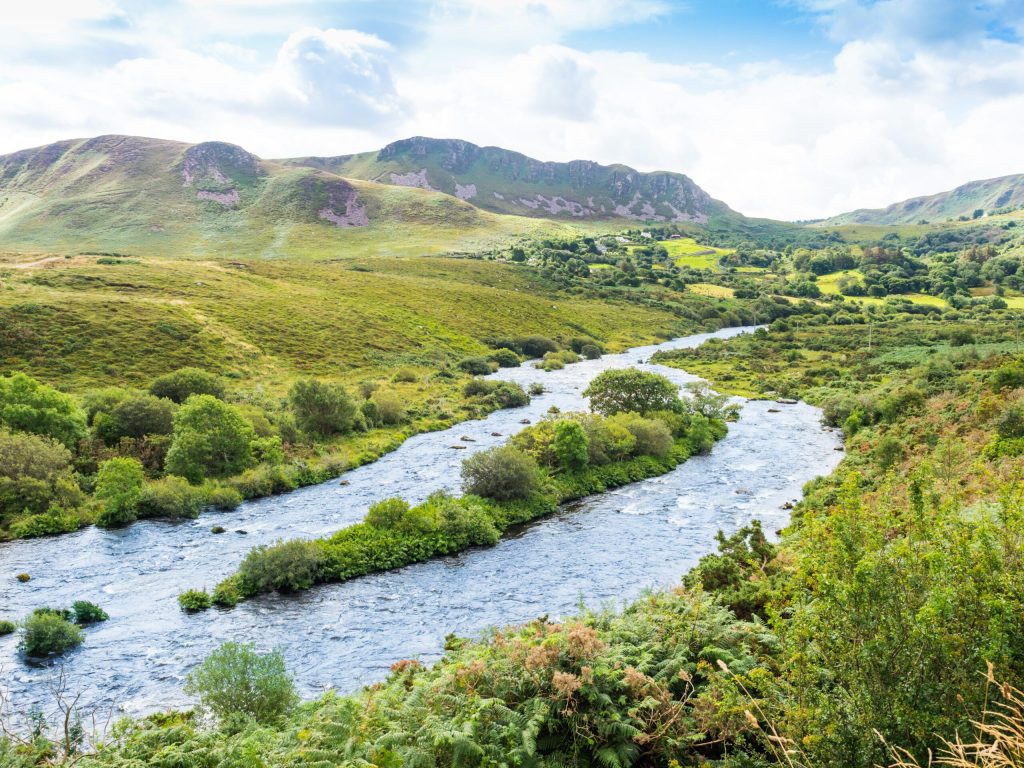
Where Is the Kerry Way?
The Kerry Way is in County Kerry in southwest Ireland. The 135-mile trail starts in Killarney town, initially taking you past Killarney National Park if you are walking in an anti-clockwise direction. The route continues west towards Glenbeigh on the coast, taking you around the peninsula until you reach Caherdaniel in the southwest, before returning to Killarney.
With the start and end point in Killarney, it’s easy to sort out logistics before and after the trip. If you’re self-driving you can leave your car in Killarney, while if you are traveling using public transport, there are plenty of options.
There is a small airport located just outside the town, with irregular flights to several Irish and European cities, including London and Dublin. Shannon and Cork are both one to two hours’ drive away, and these larger cities have larger airports with more regular flights. Dublin is a good four hours drive away.
There are regular buses running to Killarney from most major Irish cities, in particular from Cork and Shannon where you can change to travel almost anywhere else in the country.
Killarney makes the perfect base for the walk, both to prepare beforehand and to recover afterward. The town is a popular spot for tourists, as it forms part of the famous Ring of Kerry driving route. This means you can find plenty of accommodation in Killarney, ranging from budget hostels and local bed and breakfasts to boutique hotels. There are some great restaurants and cafes, and plenty of places to relax and prepare.
If you need any last-minute equipment, then Killarney will be the last opportunity to make sure your hiking gear is in order; you can pick up most items in the outdoor shops here. You can also stock up on any supplies that you’ll need to carry with you while walking the Kerry Way.
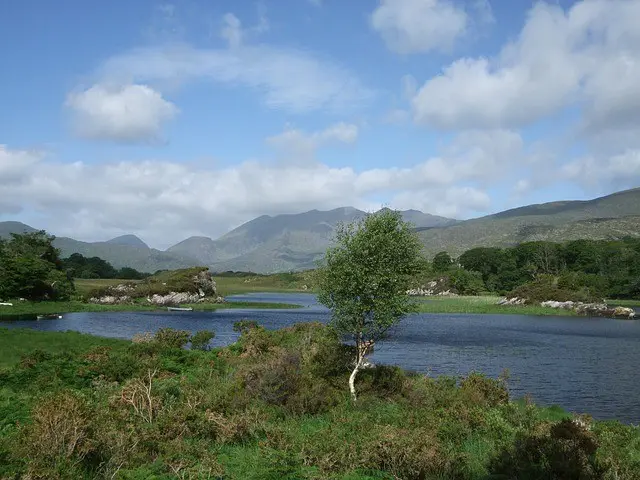
History of the Kerry Way
The Kerry Way is a relatively new creation, however, the footpaths, trails, and scenery have always been here. The Kerry Way was devised in the 1980s by intrepid locals who were looking to make the area around Killarney and the southwest of Ireland more accessible to walkers. A huge network of old trails and footpaths already crossed many of the valleys, through ancient farming land and along the coast. However, for hikers new to the area, it was difficult to establish the best routes to follow, as many were not even properly mapped out.
With the help of landowners, the Kerry Way was pieced together from existing paths to form a circular route, that was then upgraded, improved, mapped, and waymarked, allowing visitors to easily access the beautiful scenery and explore County Kerry on their own.
A few decades later, the Kerry Way is one of the best and most popular long-distance walking routes in Ireland.
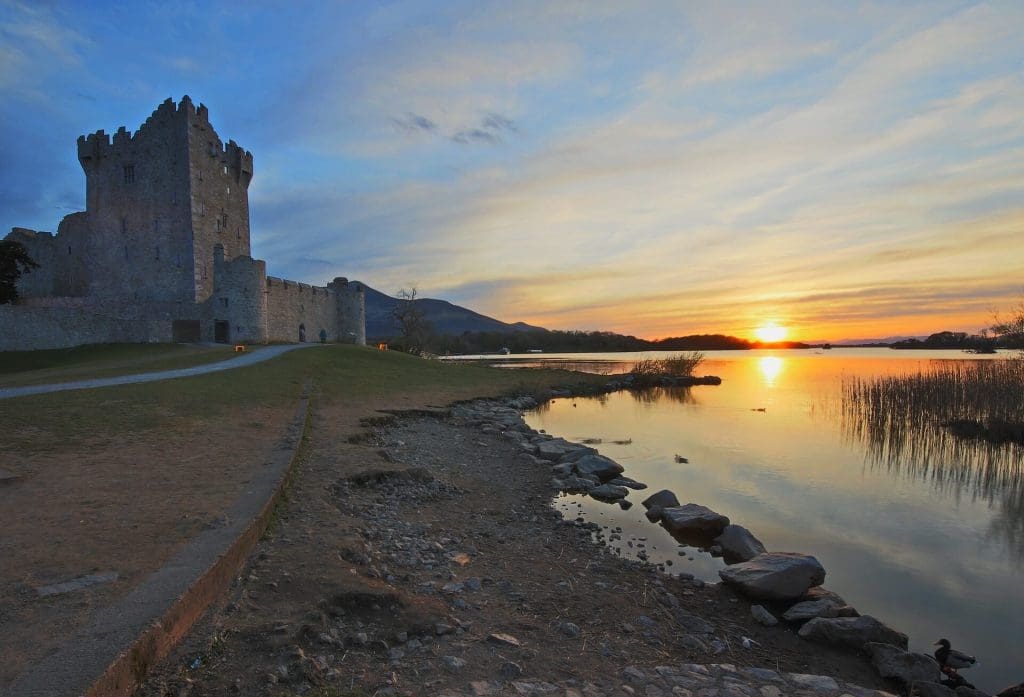
How Long Does It Take To Walk?
The Kerry Way is divided into nine sections, which cover the 135-mile round trip and break the journey up into manageable chunks. These nine sections are designed to take nine days to walk, however, you can take your time and spend longer hiking through the countryside if you desire. If you’re a fast and experienced hiker, then it’s possible to complete the route in less time.
Each section varies in length depending on the topography and terrain, with the shortest section being just 11 miles and the longest 19 miles. The route is designed so that you mainly pass through valleys, rather than summiting any mountain peaks, and the highest elevation is only ever around 400 meters.
The paths are all very well maintained, and being waymarked it’s difficult to get lost. The footing varies, however, from well-worn footpaths to rocky trails through valleys. On the more difficult sections, you’ll need to walk slower.
The Best Time Of Year To Walk The Kerry Way
The most popular time of year to walk the Kerry Way is during summer when there are long hours of daylight and plenty of sunshine. May to September is generally the busiest period, but also when daytime temperatures are at their hottest, reaching into the high 20s.
March and April can be great months to hike too when the temperature isn’t so high and the walking trails are less crowded. You can hike in winter as well, but you’ll need to be prepared with plenty of warm clothing and waterproofs, and you can expect short days and lots of rain.
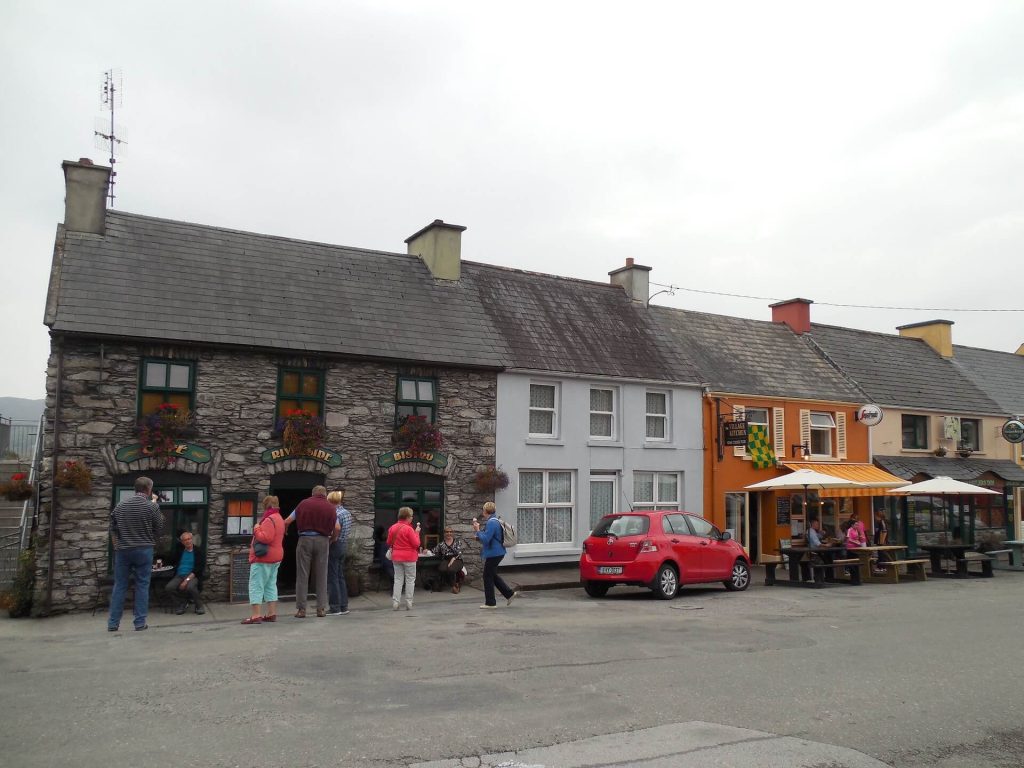
Accommodation And Supplies Along The Route
Having become such a popular hiking route, there’s a substantial amount of accommodation along the Kerry Way. If you’re carrying your own gear, then it’s possible to camp out along the trails, with many designated camping spots complete with facilities.
If you’d rather not carry camping equipment, then it’s possible to walk the Kerry Way and have a nice place to stay each night. There are guesthouses and bed and breakfasts all along the route, many offering wonderful stays in old farmhouses or rural villages, which can be a great way to get to know locals.
In peak season, you might want to book your guesthouses in advance, as the Kerry Way can get busy. There are many dedicated travel companies that offer walking packages, booking your accommodation and even transferring your luggage from one hotel to the next, allowing you to just walk and enjoy the scenery.
Just as you’ll find plenty of accommodation options along the way, you’ll also find plenty of options for stocking up on supplies. In the villages, you’ll inevitably find the odd pub and café serving local dishes, while there are plenty of places to stock up on water and basic food supplies if you are self-supported and wish to cook your own meals.
If you are cooking your own food, then take plenty of gas or other fuel for your stoves, as this may be difficult to come across if you run out. Also ensure that you dispose of your rubbish in a suitable manner and don’t litter the trails or campsites, to keep the Kerry Way clean for everyone.
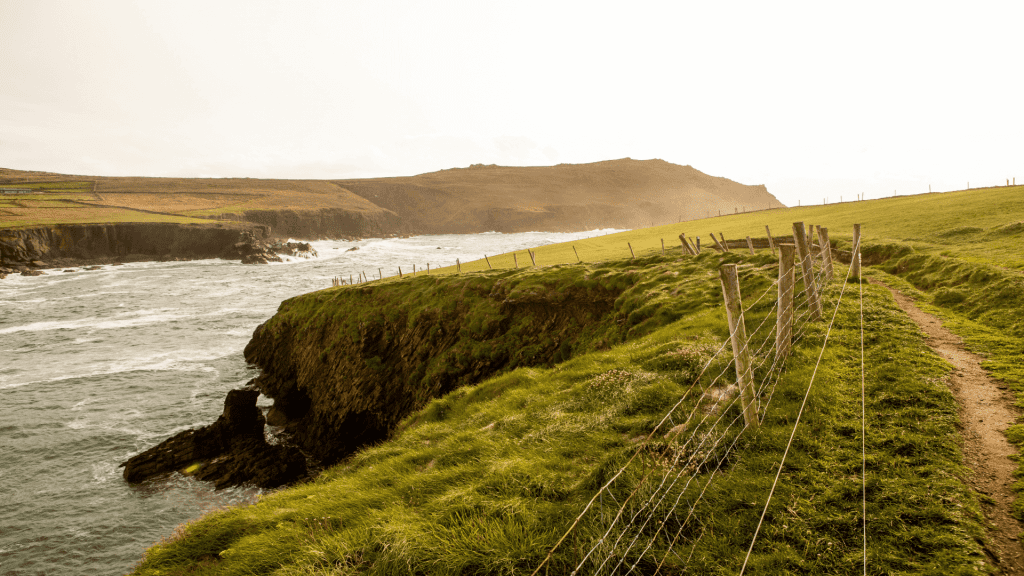
What Do I Need to Bring On The Walk?
What you need in terms of equipment will depend on your style of hiking and whether you’re camping or staying in hotels. If you’re camping along the Kerry Way, then you’ll need to carry all of your own equipment, including a good tent, cooking stove, fuel, and plenty of water. You’ll also need a sleeping bag, the thickness of which will depend on the time of year you’re traveling. A good hiking rucksack that you are used to walking with is imperative.
If you’re staying in accommodation, then you’ll need less equipment and will be able to travel much lighter, as you won’t need your camping gear. Regardless of where you are staying though, ensure you have at least one set of dry clothes to change into each night in case it rains, and regardless of the season always carry waterproof clothing. Pack some warm clothes in case the weather drops, so you can layer up too.
Hiking boots are a must. Before you start this 9-day walk, make sure your boots are worn in and comfortable. Walking sticks aren’t a necessity, but you may find them useful on the rockier and more elevated sections of the trail.
Before you set off each day, make sure you have snacks and plenty of water in your pack. While the trail is clearly marked, you might also want to invest in a local map and compass, to make things easier or in case you do happen to lose your way.
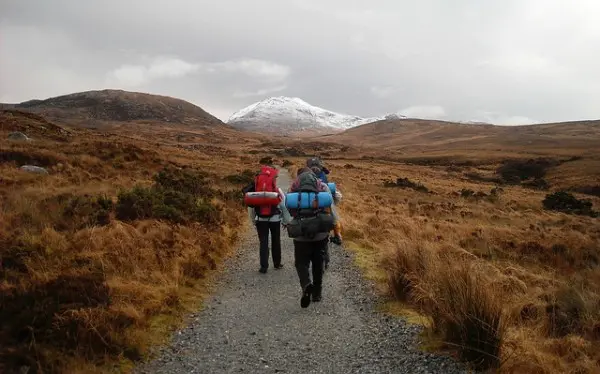
The Kerry Way Route
You can walk the Kerry Way in any direction, but generally, most hikers choose to go anticlockwise from Killarney. The route is broken down into the following nine major sections.
1. Killarney to Black Valley, 14 Miles
From Killarney town head south towards Muckross following the beautiful Lough Leane, passing waterfalls and through the gorgeous scenery of Killarney National Park, before heading west towards Black Valley.
2. Black Valley to Glencar, 12 Miles
Section two takes you from Black Valley, further west to Glencar. This is one of the most rugged parts of the trail, as you hike along ridges and down a few rocky ascents, but it’s also one of the most spectacular sections.
3. Glencar to Glenbeigh, 11 Miles
From Glencar, hike northwest towards the coast, where you’ll finish the day in the town of Glenbeigh. After a tougher second day, the third section is much easier, taking you along charming rural footpaths to the Atlantic Ocean.
4. Glenbeigh to Cahersiveen, 17 Miles
The fourth section of the Kerry Way sees you hiking through the hills and offers incredible views over the Atlantic Ocean and along the coast. You finish the stage in the coastal town of Cahersiveen.
5. Cahersiveen to Waterville, 19 Miles
Now you leave the coast and begin to head inland, and south towards Waterville. This is a tougher section in places, as you’ll encounter the highest point on the Kerry Way, at just under 400 meters in height, at Knockavahaun.
6. Waterville to Caherdaniel, 17 Miles
The long route from Waterville to Caherdaniel takes you inland, through some of the most rugged landscapes on the peninsula. It’s a 17-mile hike, but if you prefer there’s also a shorter coastal route, that’s relatively flat and is just 8 miles long.
7. Caherdaniel to Sneem, 12 Miles
From Caherdaniel to Sneem you are following some of the most historic routes in southwest Ireland, and you can call in at old forts and charming villages on your way.
8. Sneem to Kenmare, 19 Miles
Sneem to Kenmare is one of the longest sections of the Kerry Way, but luckily, it’s fairly flat, and you’ll have a pleasant day of relaxed walking on the penultimate section of the hike.
9. Kenmare to Killarney, 16 Miles
Kenmare to Killarney is the final section of the Kerry Way, and a 16-mile hike will see you returning to your starting point after walking a full circle. You’ll be hiking north from Kenmare, and the final section will see you walking back along the same first section on which you began your journey.
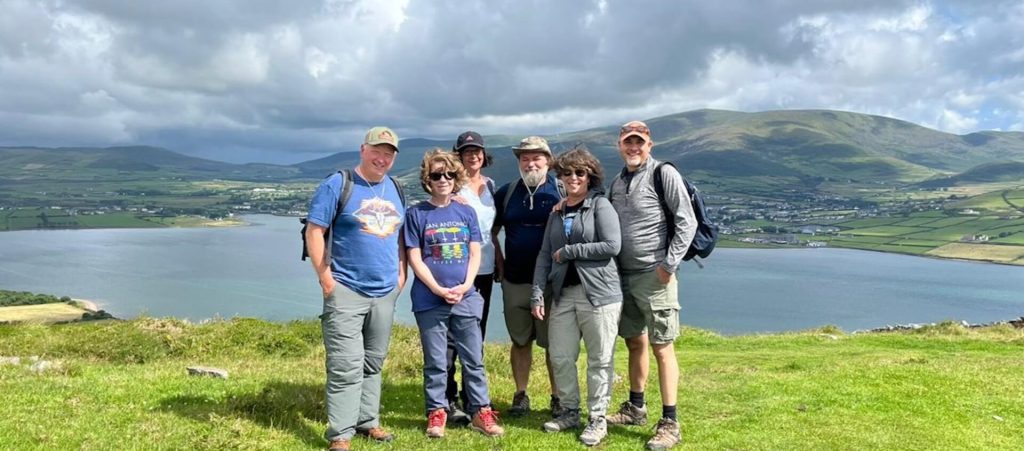
Safety on the Kerry Way
The Kerry Way is a well-established and busy walking route and one of the safest long-distance hikes you can undertake in Ireland. Before you begin your walk though, make sure you have made all preparations and have gone through some training, to make sure you’re fit enough to complete it.
Take a mobile phone with you for emergencies, however, you will also find that there are plenty of other hikers out there if something bad does happen. If you need to abandon, then you should be able to find transport back to Killarney relatively easily from the nearest town or village. For the more remote sections, make sure you have the contact numbers for the mountain rescue teams. If you are traveling here from abroad, then you will want to invest in travel insurance that covers you for hiking, just in case.
To find out more about walking the Kerry Way or to book your Irish adventure, contact Overland Ireland today.



